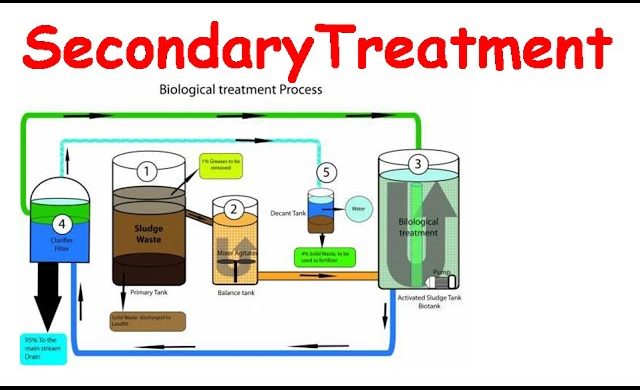Secondary treatment of wastewater
Wastewater treatment lecture on secondary wasterwater management. http://shomusbiology.com/
Download the study materials here-
http://shomusbiology.weebly.com/bio-materials.html
Secondary treatment
Secondary treatment is designed to substantially degrade the biological content of the sewage which are derived from human waste, food waste, soaps and detergent. The majority of municipal plants treat the settled sewage liquor using aerobic biological processes. To be effective, the biota require both oxygen and food to live. The bacteria and protozoa consume biodegradable soluble organic contaminants (e.g. sugars, fats, organic short-chain carbon molecules, etc.) and bind much of the less soluble fractions into floc. Secondary treatment systems are classified as fixed-film or suspended-growth systems.
Fixed-film or attached growth systems include trickling filters, biotowers, and rotating biological contactors, where the biomass grows on media and the sewage passes over its surface.[7]:11–13 The fixed-film principal has further developed into Moving Bed Biofilm Reactors (MBBR), and Integrated Fixed-Film Activated Sludge (IFAS) processes. An MBBR system typically requires smaller footprint than suspended-growth systems.[10]
Suspended-growth systems include activated sludge, where the biomass is mixed with the sewage and can be operated in a smaller space than trickling filters that treat the same amount of water. However, fixed-film systems are more able to cope with drastic changes in the amount of biological material and can provide higher removal rates for organic material and suspended solids than suspended growth systems.[7]:11–13
Roughing filters are intended to treat particularly strong or variable organic loads, typically industrial, to allow them to then be treated by conventional secondary treatment processes. Characteristics include filters filled with media to which wastewater is applied. They are designed to allow high hydraulic loading and a high level of aeration. On larger installations, air is forced through the media using blowers. The resultant wastewater is usually within the normal range for conventional treatment processes. Source of the article published in description is Wikipedia. I am sharing their material. © by original content developers of Wikipedia.
Link- http://en.wikipedia.org/wiki/Main_Page
Comments are closed.

